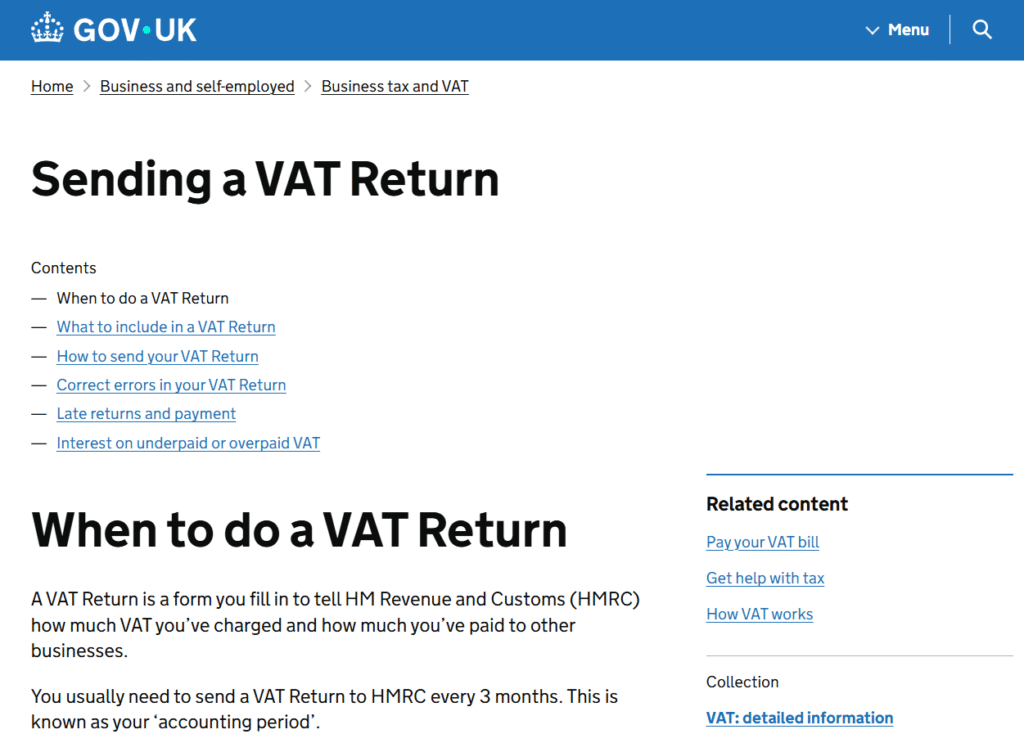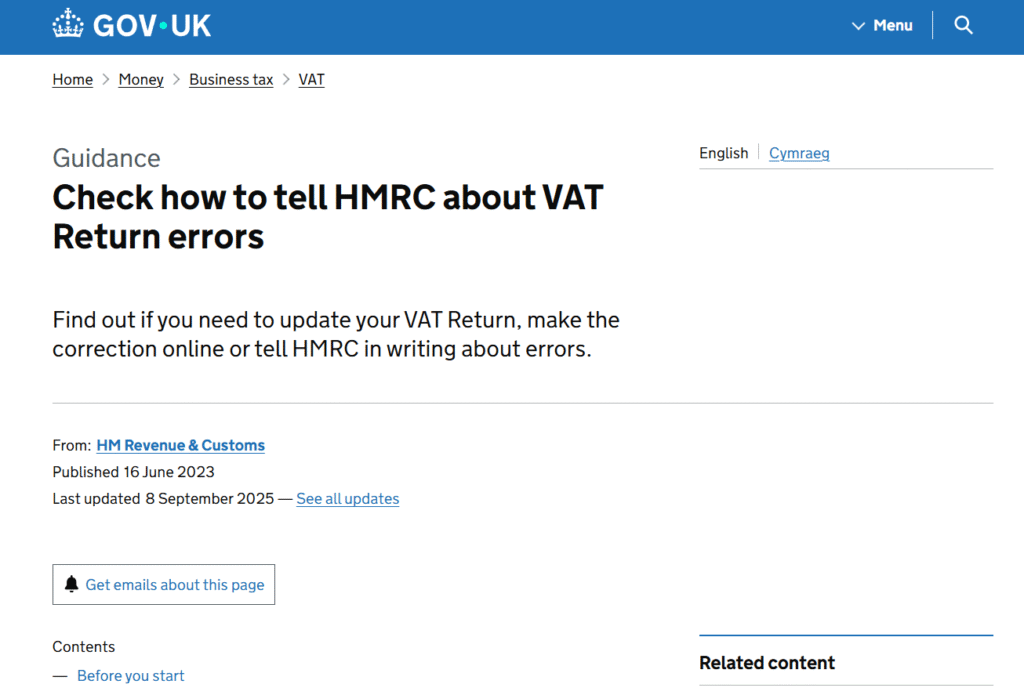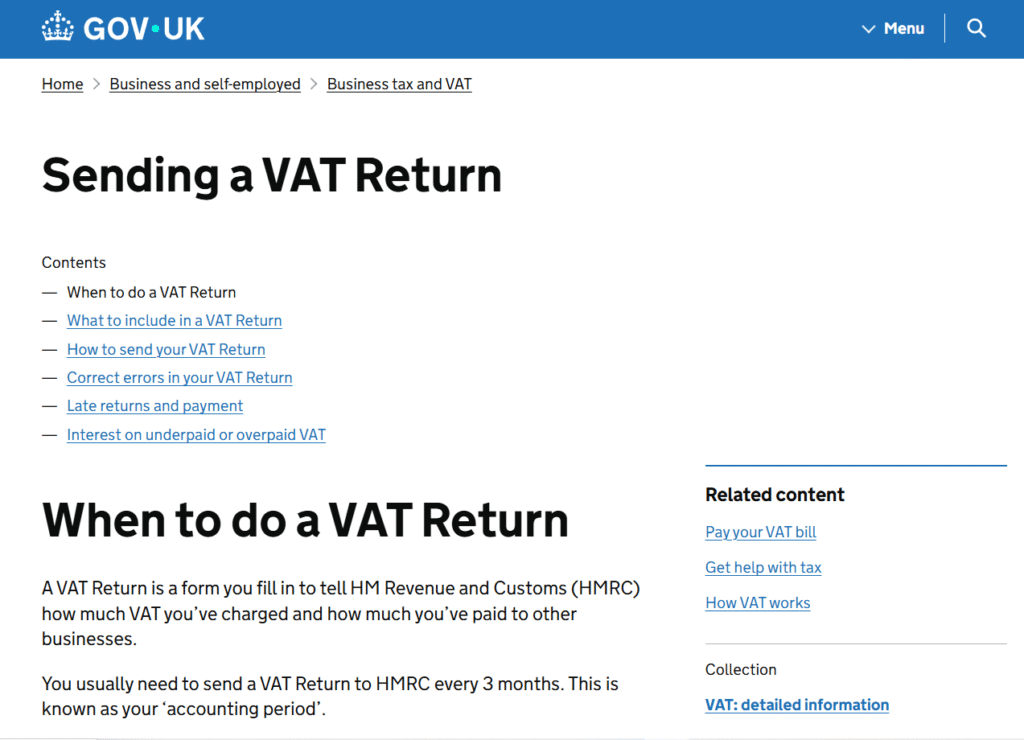VAT100 HMRC – Complete Guide to VAT Returns, VAT100 Boxes, MTD Submission Rules, and How to Correct VAT Return Errors
Understanding the VAT100 Form (Modern and Historic Context)
The VAT100 is the traditional name for the UK VAT Return — the form used by VAT-registered businesses to report VAT due to HMRC every VAT period. Before Making Tax Digital (MTD), businesses often submitted VAT100 paper forms or filed returns manually online. Today, VAT returns are normally submitted digitally through MTD-compatible software, but the structure of the VAT100 return remains the same.
Each VAT100 return contains nine boxes, covering sales, purchases, VAT due, VAT reclaimed, total liability, and the value of supplies made and received across the UK and internationally. Understanding how these boxes work is essential for accurate compliance.
This comprehensive guide explains:
-
What the VAT100 form is
-
How VAT100 works under MTD
-
How to complete each box correctly
-
How to avoid common VAT mistakes
-
How to correct VAT100 errors
-
What to do if you miss a deadline
-
How to request help
-
How Audit Consulting Group assists businesses
What Is the VAT100 Form?
The VAT100 is the format of the standard UK VAT Return used by VAT-registered businesses. Even though HMRC no longer uses the physical paper VAT100 form in most cases, the VAT return submitted today through software is still based on the VAT100 structure.
The VAT100 return contains nine boxes:
-
VAT due on sales and other outputs
-
VAT due on acquisitions from EU
-
Total VAT due
-
VAT reclaimable on purchases
-
Net VAT due to HMRC
-
Total value of sales excluding VAT
-
Total value of purchases excluding VAT
-
Value of EU supplies
-
Value of EU acquisitions
(Boxes 2, 8, and 9 are now largely obsolete post-Brexit but remain structurally part of the VAT100.)
Businesses submit this return every:
-
3 months (most common)
-
Monthly (if approved by HMRC)
-
Annually (Annual Accounting Scheme)
Why Is VAT100 Still Relevant Today?
Even though VAT100 as a paper form is mostly obsolete, the structure is still used for:
-
VAT returns filed through MTD software
-
Late returns for older VAT periods
-
Correcting historical VAT periods
-
VAT audits and investigations
-
VAT deregistration reports
-
VAT refund claims
-
VAT compliance checks
The nine-box VAT100 structure ensures consistency across all UK VAT systems.
Who Must Submit a VAT100 Return?
You must submit a VAT return (VAT100) if:
-
Your business is VAT registered
-
Your turnover exceeds £90,000 (2024–2025 threshold)
-
You voluntarily registered for VAT
-
You joined a VAT scheme (Flat Rate, Cash Accounting, Annual Accounting)
-
You are distance selling or importing/exporting goods
-
You receive reverse-charge transactions
You do not need to submit VAT100 if:
-
You are deregistered
-
You are under the VAT threshold AND unregistered
-
You trade in exempt supplies only
When VAT100 Returns Must Be Filed
Typically:
-
Quarterly (every 3 months)
-
Deadline: 1 month + 7 days after period end
-
Payment deadline matches submission deadline
Example:
VAT quarter ends: 31 March
VAT100 must be submitted by: 7 May
HMRC official deadlines:
https://www.gov.uk/submit-vat-return
How to Submit a VAT100 Return Today (MTD Rules)
Under Making Tax Digital (MTD), VAT100 must be submitted using:
-
MTD-compatible accounting software, OR
-
Bridging software
MTD software list:
https://www.gov.uk/guidance/find-software-thats-compatible-with-making-tax-digital-for-vat
Software used includes:
-
Xero
-
QuickBooks
-
Sage
-
FreeAgent
-
KashFlow
-
Zoho Books
-
MTD bridging tools for spreadsheets
Manual entry is no longer allowed except for:
-
Digital exemption cases
-
Insolvency
-
Religious objections
-
Certain legacy returns
Understanding Each Box of the VAT100 (Detailed Breakdown)
Below is a full breakdown of every box, what must be included, and common mistakes.
Box 1 – VAT Due on Sales and Other Outputs
Includes:
-
Standard rate VAT
-
Reduced rate VAT
-
VAT on debit notes
-
Reverse charge VAT
-
VAT on supplies of services from abroad
-
VAT on bad debt relief adjustments
-
VAT on VAT-scheme adjustments
Common mistakes:
-
Forgetting reverse charge VAT
-
Claiming zero-rate incorrectly
-
Mixing up EU vs non-EU sales
Box 2 – VAT Due on Acquisitions from the EU
Pre-Brexit this included EC acquisition VAT.
Post-Brexit:
-
Often zero unless Northern Ireland Protocol applies
-
NI businesses may still declare EU acquisitions
Box 3 – Total VAT Due (Box 1 + Box 2)
Automatically calculated by software.
Box 4 – VAT Reclaimed on Purchases
Includes:
-
Standard VAT on expenses
-
VAT on capital purchases
-
VAT on imports using postponed VAT accounting (PVA)
-
Correcting purchasing errors
-
VAT on bad debt relief
Common mistakes:
-
Claiming VAT on items with no VAT
-
Claiming VAT on entertainment
-
Not claiming PVA from C79/PVA statements
Box 5 – Net VAT Due to HMRC
Calculation:
Box 3 – Box 4 = VAT due OR refundable
If negative → refund owed.
If positive → payment due.
Box 6 – Total Value of Sales (Excluding VAT)
Must include:
-
All UK sales
-
Exports
-
Zero-rated sales
-
Reverse charge sales
-
Exempt sales (for reporting only)
Box 7 – Total Value of Purchases (Excluding VAT)
Includes:
-
All purchases
-
Imports
-
Zero-rated purchases
-
Exempt purchases
-
Capital goods
Boxes 8 & 9 – EU Supplies and Acquisitions
Post-Brexit:
-
Used only in NI Protocol contexts
-
Must not include non-EU sales
How to Fix Errors on a VAT100 Return
Errors under £10,000 may usually be corrected in the next VAT return.
Errors over £10,000 require reporting via:
VAT652 – Error Correction Notice
https://www.gov.uk/guidance/check-if-you-need-to-report-errors-in-your-vat-return
We assist with:
-
VAT652 preparation
-
HMRC negotiation
-
Reconciliations
Who Checks VAT100 Returns? HMRC VAT Audits Explained
HMRC conducts:
-
Random checks
-
Risk-based checks
-
Sector-specific reviews
Triggers for audits:
-
High Box 4 claims
-
Late submissions
-
Missing PVA entries
-
Large fluctuations in sales
-
Incorrect export declarations
-
Zero-rated supply inconsistencies
-
Long periods with VAT refunds
Audit Consulting Group supports clients during:
-
VAT audits
-
Compliance checks
-
VAT disputes
-
HMRC correspondence
VAT Schemes and How They Affect the VAT100
1. Flat Rate Scheme (FRS)
Only report:
-
Gross sales
-
Apply FR rate
-
No VAT on purchases (except capital goods over £2,000)
2. Cash Accounting Scheme
Declare VAT when paid, not invoiced.
3. Annual Accounting
One VAT100 return per year.
4. Margin Schemes
Only margins subject to VAT (e.g., second-hand goods, motor trade).
We advise which scheme is best.
Common VAT100 Mistakes
For Businesses:
-
Claiming VAT on non-VAT invoices
-
Forgetting reverse charge VAT
-
Not reporting imports correctly
-
Missing deadlines
-
VAT on entertainment incorrectly claimed
-
Not keeping digital records
-
Not using MTD software
For Accountants:
-
Misallocating transactions
-
Failing to check PVA statements
-
Excluding EC sales incorrectly
-
Incorrect VAT code mapping
We fix all such errors.
How to Correct Past VAT100 Returns (8-Step Process)
-
Review all VAT periods
-
Compare bookkeeping to bank statements
-
Check purchase VAT evidence
-
Review PVA and C79 statements
-
Identify under- or over-claimed VAT
-
Prepare adjustment calculations
-
Submit next VAT100 or VAT652
-
Communicate with HMRC if required
Audit Consulting Group can handle this entire process.
Penalties for Incorrect or Late VAT100 Returns
HMRC can charge penalties for:
-
Late submission
-
Late payment
-
Careless errors
-
Deliberate understatement
-
VAT evasion
Penalties range from:
-
5% to 100% depending on behaviour
We negotiate penalty reductions.
Case Studies
Case Study 1 – PVA Not Declared
Business failed to claim £9,000 of import VAT.
Outcome: We corrected Box 4 and reclaimed the VAT.
Case Study 2 – VAT652 Submission
Retail chain overpaid VAT for 6 quarters.
Refund: £32,400.
Case Study 3 – Flat Rate Scheme Error
Hospitality business misapplied FRS.
Outcome: HMRC refunded £4,200 after correction.
Case Study 4 – Late VAT Returns
Client had 7 late VAT100s.
We submitted all returns, negotiated penalties, and arranged Time to Pay.
Frequently Asked Questions (FAQ)
Q1: What is the VAT100 form?
It is the nine-box VAT return submitted to HMRC.
Q2: Is VAT100 still used today?
Yes — digitally under MTD.
Q3: Can I file VAT100 on paper?
Only if exempt from MTD.
Q4: How often must VAT100 be filed?
Typically quarterly.
Q5: How do I correct VAT100 errors?
Small errors in next return; large via VAT652.
Q6: Can HMRC ask for old VAT100 returns?
Yes — up to 20 years in serious cases.
Q7: Why is my VAT refund delayed?
Often due to compliance checks.
Q8: What records must I keep?
Digital VAT records for 6 years.
Official GOV.UK VAT guidance:
https://www.gov.uk/vat-returns








